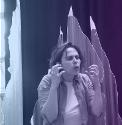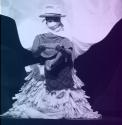| Resumen | Dear readers,
Here I hand you the key to my trunk hoping that you will have fun with what you will find, hoping that you will take the chance to reflect upon the construction of female characters in the theatre, and that perhaps you decide to take the women Shakespeare left us, now recycled, to the stage. In daring to recycle Shakespeare ́s characters, I ́m inspired by his own recycling of characters of his past so they wouldn ́t fade and disappear from our imaginary.
I have performed the monologues included here in several Brazilian universities followed by discussion, in National and International Conferences on Literature and Theatre, in Theatre Festivals in Brazil, in Argentina and in Denmark. Now I open my safe so you can read them, stage them, and have fun while participating in the effort to expose and to denounce the biased treatment given to women, not only to Shakespeare ́s women, on the stage and beyond.
The monologues Ophelia: the (sur)real story and Ann Hathaway: Shakespeare ́s Wife last around one hour. All the remaining are short performances of about 15
minutes which were presented in the format I call Talk/Performance, in which the talk is interrupted at times so as to give space to the performance and, therefore, put together theory and practice. While Ophelia and Ann Hathaway require some scenery and wardrobe, the remaining monologues can be staged with one or more chairs and a few props – such as Lady Macbeth ́s handcuffs, Cleopatra ́s snake etc. The dialogues in Backstage Talk can be done on stage or in audio. In all my presentations of these parodies I have made use of images collected in the Internet, either paintings or photographs of actresses in Shakespeare`s roles on stage and in film. The stage directions I have included in the texts are simply to indicate how I have conceived the dynamic of the performances and are not necessarily to be followed.I hope you enjoy these recycled female characters as much as I have enjoyed writing and performing their monologues. I also hope that you have new insights on Shakespeare ́s female characters, different from what tradition has taught us, and now in the colors of the present. According to neuroscientists, colors do not exist, it ́s the human mind that changes light into color, it ́s our eyes that color the world.
Lucia V. Sander
|





